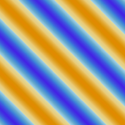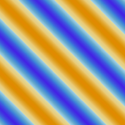Where stripes come from
Wherever there is spontaneous formation of regular patterns, we seek to understand the underlying cause. Stripe domains occur frequently in a wide variety of systems, for example, ultrathin magnetic films, lipid monolayers, adsorbates on metal surfaces, and ferrofluids. Even though stripe domains are a relatively simple texture, they have, so far, eluded an explanation whose generality would match their ubiquity. Now, Erik Edlund and Martin Nilsson Jacobi from Chalmers University of Technology in Göteborg, Sweden, write in Physical Review Letters of a substantial advance in making sense of the universality of striped microstructures.
The Swedish researchers find that for any system where interactions can be modeled as isotropic, the emergence and the characteristic length scale of the pattern are determined by the nontrivial minimum in the energy excitation spectrum, where the latter is simply the Fourier transform of the interaction potential. Even qualitatively different potentials end up having a dominant minimum in their energy spectrum, so the stripe morphology is merely the physical guise of this mathematical feature. Thus examining the problem in reciprocal space pays off nicely, the way it has so many times before in physics. In addition to finding a unifying feature of stripe morphologies, the proposed analysis opens up new possibilities for molecular assembly of patterned structures. The study goes as far as to provide a rather convincing proof of principle of how the scheme works in practice. – Yonko Millev





